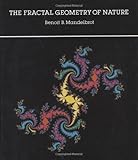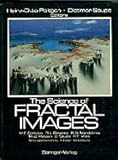|
|
Help |
| Home - Scientists - Mandelbrot Benoit (Books) | |
e99 Online Shopping Mall
|
|
Help |
| Home - Scientists - Mandelbrot Benoit (Books) | |
| 1-20 of 65 | Next 20 |
click price to see details click image to enlarge click link to go to the store
| 1. The Misbehavior of Markets: A Fractal View of Financial Turbulence by Benoit Mandelbrot, Richard L. Hudson | |
 | Paperback: 368
Pages
(2006-03-07)
list price: US$18.95 -- used & new: US$8.95 (price subject to change: see help) Asin: 0465043577 Average Customer Review: Canada | United Kingdom | Germany | France | Japan |
|
Editorial Review Product Description Mathematical superstar and inventor of fractal geometry, Benoit Mandelbrot, has spent the past forty years studying the underlying mathematics of space and natural patterns. What many of his followers don't realize is that he has also been watching patterns of market change. In The (Mis)Behavior of Markets, Mandelbrot joins with science journalist and former Wall Street Journal editor Richard L. Hudson to reveal what a fractal view of the world of finance looks like. The result is a revolutionary reevaluation of the standard tools and models of modern financial theory. Markets, we learn, are far riskier than we have wanted to believe. From the gyrations of IBM's stock price and the Dow, to cotton trading, and the dollar-Euro exchange rate--Mandelbrot shows that the world of finance can be understood in more accurate, and volatile, terms than the tired theories of yesteryear.The ability to simplify the complex has made Mandelbrot one of the century's most influential mathematicians. With The (Mis)Behavior of Markets, he puts the tools of higher mathematics into the hands of every person involved with markets, from financial analysts to economists to 401(k) holders. Markets will never be seen as "safe bets" again. Customer Reviews (70)
| |
| 2. The Fractal Geometry of Nature by Benoit B. Mandelbrot | |
 | Hardcover: 468
Pages
(1983)
list price: US$50.00 -- used & new: US$32.92 (price subject to change: see help) Asin: 0716711869 Average Customer Review: Canada | United Kingdom | Germany | France | Japan |
|
Editorial Review Product Description The Fractal Geometry ofNature is a mathematics text. But buried in the deltas and lambdasand integrals, even a layperson can pick out and appreciateMandelbrot's point: that somewhere in mathematics, there is anexplanation for nature. It is not a coincidence that fractal math isso good at generating images of cliffs and shorelines and capillarybeds. Customer Reviews (20)
| |
| 3. Fractals and Scaling In Finance: Discontinuity, Concentration, Risk by Benoit B. Mandelbrot | |
 | Paperback: 551
Pages
(2010-11-02)
list price: US$84.95 -- used & new: US$68.03 (price subject to change: see help) Asin: 1441931198 Average Customer Review: Canada | United Kingdom | Germany | France | Japan |
|
Editorial Review Product Description Mandelbrot is world famous for his creation of the new mathematics of fractal geometry. Yet few people know that his original field of applied research was in econometrics and financial models, applying ideas of scaling and self-similarity to arrays of data generated by financial analyses. This book brings together his original papers as well as many original chapters specifically written for this book. Customer Reviews (4)
| |
| 4. Gaussian Self-Affinity and Fractals by Benoit Mandelbrot | |
 | Hardcover: 664
Pages
(2001-12-14)
list price: US$97.00 -- used & new: US$4.87 (price subject to change: see help) Asin: 0387989935 Canada | United Kingdom | Germany | France | Japan |
|
Editorial Review Product Description | |
| 5. Fractals and Chaos: The Mandelbrot Set and Beyond by Benoit B. Mandelbrot | |
 | Hardcover: 308
Pages
(2004-01-09)
list price: US$69.95 -- used & new: US$44.26 (price subject to change: see help) Asin: 0387201580 Canada | United Kingdom | Germany | France | Japan |
|
Editorial Review Product Description --From the foreword by Peter W Jones, Yale University This book provides a history of the Mandelbrot set of quadratic dynamics together with the authors hard-to-find early papers. It has extensive illustrations throughout and is divided into four sections: quadratic dynamics, klein groups, Minkowski measures, and Julia sets. Each section starts with introductory chapters giving historical context and background to the material. Benoit B Mandelbrot is Sterling Professor of Mathematical Sciences at Yale University and IBM Fellow Emeritus (Physics) at the IBM T J Watson Research Center. He was awarded the Wolf Prize for Physics in 1993 and the Japan Prize for Science and Technology in 2003. | |
| 6. Fractals, Graphics, and Mathematics Education (Mathematical Association of America Notes) by Benoit Mandelbrot, Michael Frame | |
 | Paperback: 224
Pages
(2002-05-01)
list price: US$49.95 -- used & new: US$44.74 (price subject to change: see help) Asin: 0883851695 Average Customer Review: Canada | United Kingdom | Germany | France | Japan |
|
Editorial Review Product Description Customer Reviews (1)
| |
| 7. Fractals: Form, Chance and Dimension by Benoit B. Mandelbrot | |
 | Hardcover: 365
Pages
(1977-09)
Isbn: 0716704730 Canada | United Kingdom | Germany | France | Japan |
| 8. Multifractals and 1/f Noise: Wild Self-Affinity in Physics (1963-1976) by Benoit B. Mandelbrot | |
| Hardcover: 442
Pages
(1999-01-18)
list price: US$59.95 -- used & new: US$32.97 (price subject to change: see help) Asin: 0387985395 Average Customer Review: Canada | United Kingdom | Germany | France | Japan | |
|
Editorial Review Product Description Customer Reviews (2)
| |
| 9. Fractal Landscapes by Bill Hirst, Benoit B. Mandelbrot | |
| Paperback: 80
Pages
(1994-11-01)
-- used & new: US$26.78 (price subject to change: see help) Asin: 0948797231 Canada | United Kingdom | Germany | France | Japan | |
| 10. Fractals in Physics: Essays in Honour of Benoit B Mandelbrot : Proceedings of the International Conference Honouring Benoit B Mandelbrot on His 65th by Amnon Aharony | |
| Paperback: 400
Pages
(1990-06)
list price: US$51.50 -- used & new: US$84.99 (price subject to change: see help) Asin: 044488646X Average Customer Review: Canada | United Kingdom | Germany | France | Japan | |
Customer Reviews (1)
| |
| 11. Les Objets fractals : forme, hasard et dimension, survol du langage fractal by Benoît Mandelbrot | |
 | Mass Market Paperback: 208
Pages
(1999-01-04)
-- used & new: US$28.00 (price subject to change: see help) Asin: 2080813013 Canada | United Kingdom | Germany | France | Japan |
| 12. The Science of Fractal Images | |
 | Hardcover: 312
Pages
(1988-07-19)
list price: US$64.95 -- used & new: US$49.00 (price subject to change: see help) Asin: 0387966080 Average Customer Review: Canada | United Kingdom | Germany | France | Japan |
|
Editorial Review Product Description Customer Reviews (4)
This book reads at any level, Great introduction to the field as well as an indespencible reference. Shows easy to implement code examples, and has lots of pictures showing what can beacheived. This has been a main reference for a theisis I am currentlyworking on. The question is, why is it out of print. If you can find itit's worth it's wheight in gold.
| |
| 13. La Geometria Fractal De La Naturaleza (Spanish Edition) by Benoit Mandelbrot | |
 | Paperback: 150
Pages
(2002-01)
list price: US$43.50 -- used & new: US$40.77 (price subject to change: see help) Asin: 8483105497 Canada | United Kingdom | Germany | France | Japan |
| 14. Fractals in Geophysics by Christopher H. Scholz | |
| Paperback:
Pages
(1989-10)
list price: US$34.50 Isbn: 0817622063 Canada | United Kingdom | Germany | France | Japan | |
| 15. An Eye For Fractals: A Graphic And Photographic Essay (Studies in Nonlinearity) by Michael Mcguire, Benoit B. Mandelbrot | |
| Hardcover: 176
Pages
(1991-07-21)
list price: US$40.00 -- used & new: US$34.99 (price subject to change: see help) Asin: 0201554402 Average Customer Review: Canada | United Kingdom | Germany | France | Japan | |
|
Editorial Review Product Description Customer Reviews (4)
Fractal geometry is revolutionizing the way thatscientists perceive the universe and its underlying order.Anyone canbenefit greatly from this understanding by reading this book. ... Read more | |
| 16. Mandelbrot Set: Mathematics, Benoît Mandelbrot, Point (geometry), Complex plane, Boundary (topology), Fractal, Iterated function, Complex quadratic polynomial, ... function, Orbit (dynamics), Absolute value | |
 | Paperback: 92
Pages
(2009-12-02)
list price: US$51.00 -- used & new: US$47.97 (price subject to change: see help) Asin: 6130240236 Canada | United Kingdom | Germany | France | Japan |
|
Editorial Review Product Description | |
| 17. Polish Immigrants to the United States: Hyman G. Rickover, Benoît Mandelbrot, Casimir Funk, Czeslaw Milosz, Isaac Bashevis Singer | |
 | Paperback: 394
Pages
(2010-09-15)
list price: US$46.49 -- used & new: US$46.49 (price subject to change: see help) Asin: 1155802152 Canada | United Kingdom | Germany | France | Japan |
|
Editorial Review Product Description | |
| 18. Fractals and Chaos: The Mandelbrot Set and Beyond by Benoit Mandelbrot | |
| Paperback: 308
Pages
(2010-11-02)
list price: US$69.95 -- used & new: US$58.58 (price subject to change: see help) Asin: 1441918973 Canada | United Kingdom | Germany | France | Japan | |
|
Editorial Review Product Description Just 23 years ago Benoit Mandelbrot published his famous picture of the Mandelbrot set, but that picture has changed our view of the mathematical and physical universe. In this text, Mandelbrot offers 25 papers from the past 25 years, many related to the famous inkblot figure. Of historical interest are some early images of this fractal object produced with a crude dot-matrix printer. The text includes some items not previously published. | |
| 19. Biography - Mandelbrot, Benoit B. (1924-): An article from: Contemporary Authors by Gale Reference Team | |
 | Digital: 12
Pages
(2004-01-01)
list price: US$9.95 -- used & new: US$9.95 (price subject to change: see help) Asin: B0007SHR60 Canada | United Kingdom | Germany | France | Japan |
|
Editorial Review Product Description | |
| 20. Chaos Theorists: Stephen Wolfram, Henri Poincaré, Aleksandr Lyapunov, Benoît Mandelbrot, Edward Norton Lorenz, Steven Strogatz, Vladimir Damgov | |
 | Paperback: 112
Pages
(2010-09-15)
list price: US$20.21 -- used & new: US$20.21 (price subject to change: see help) Asin: 1155522311 Canada | United Kingdom | Germany | France | Japan |
|
Editorial Review Product Description | |
| 1-20 of 65 | Next 20 |